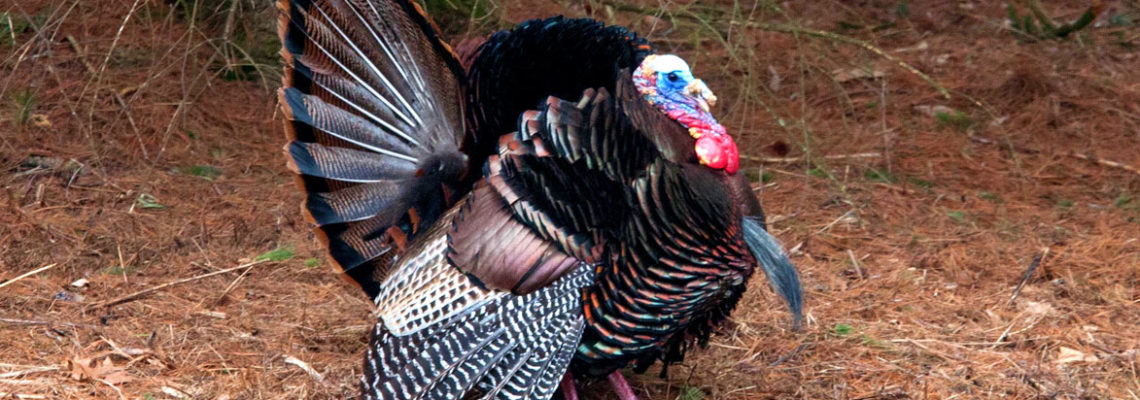
The wild turkey (Meleagris gallopavo), a native to North America, prefers several different habitats for breeding, feeding and protection. A home range for a particular flock can be 400-4000 acres of forest, field and agricultural land. Turkeys have a varied diet consisting of insects, plants, nuts, fruit and berries during the warmer months, with seeds, mosses and buds added to their winter foraging. They are social birds, usually traveling in flocks up to 30+. Surprisingly, turkeys can run 25mph and fly 35mph to avoid danger! Breeding takes place in the spring, with Toms (males) heard gobbling and seen strutting their feathers to attract hens (females). Gestation is 28 days, with most hatching (10-15) at the end of May, early June.
Vermont’s wild turkeys were basically extinct by the mid 1850’s, caused by loss of habitat and unrestricted hunting. However, beginning with the reintroduction of turkeys in the late 60’s, the population is now estimated to be 45-50,000! Trivia: All domesticated birds that appear on our Thanksgiving tables are descended from the original wild turkey. (ref: VT Fish and Wildlife Department)

